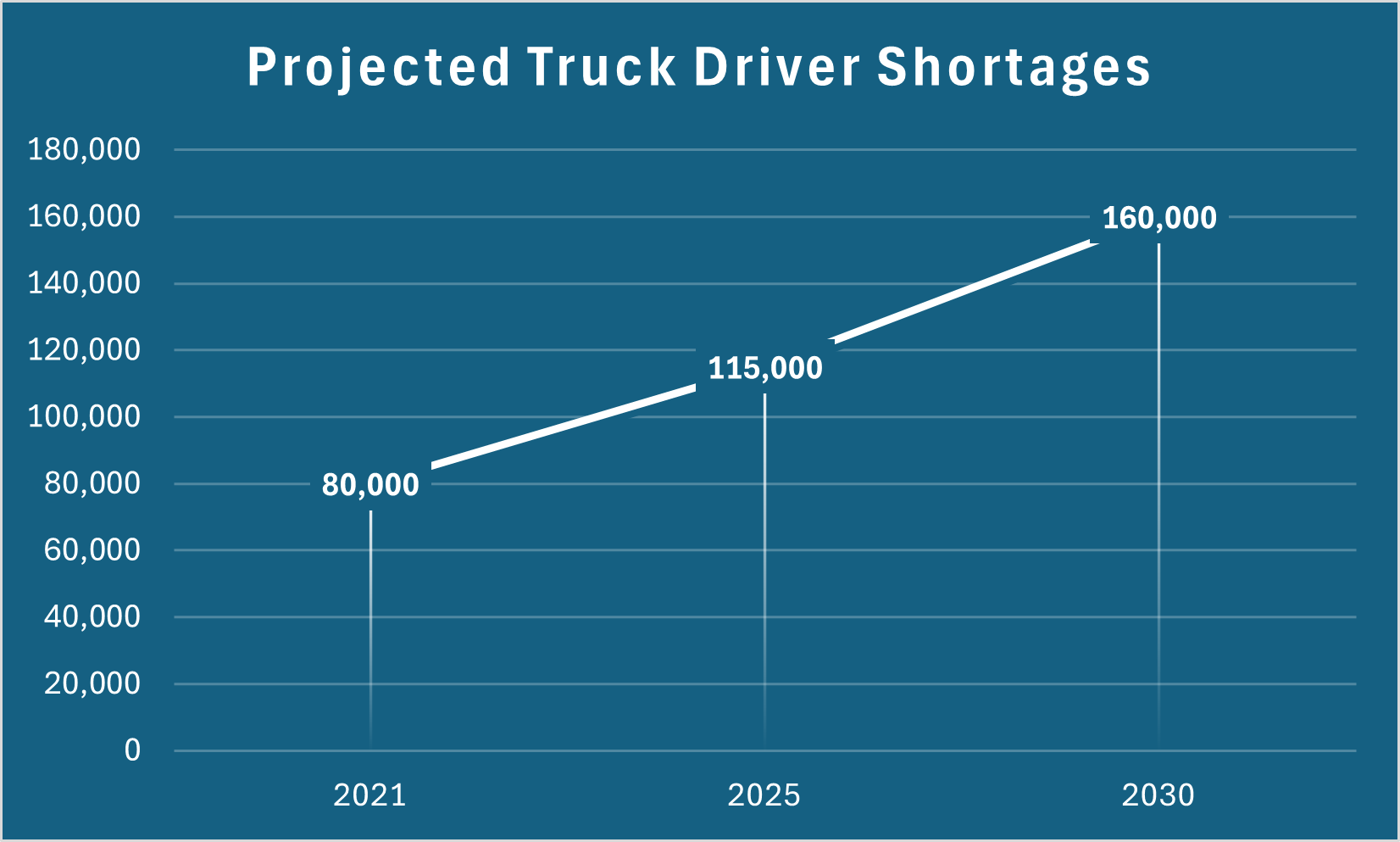Truck Driver Shortages in 2025: Challenges and How a Yard Management System Can Help
Originally posted: May 9, 2016
Updated: September 29, 2025
The U.S. trucking industry continues to face a significant driver shortage. The American Trucking Associations (ATA) reported a shortage of 80,000 drivers in 2021, with projections rising to 115,000 by the end of 2025 and 160,000 by 2030. Recently MaTrack Mobility Asset Tracking indicated that trucks carry approximately 72 percent of all freight in the United States, making these shortages a critical challenge for supply chains. Efficient yard management systems (YMS) can help fleets maintain operations and throughput despite workforce gaps.

Why is the Trucking Industry Facing a Driver Shortage?
Several factors contribute to the ongoing driver shortage, creating a complex challenge for fleets:
- Aging Workforce: The average truck driver is in his 40s, and many experienced drivers are nearing retirement. Approximately 144,000 drivers are over 65, and owner-operators often retire around age 69. Only 12 percent of drivers are under 25, and the average age of a new driver entering the profession is 35. (FinditParts)
- Lifestyle Demands: Long-haul trucking requires drivers to spend one to two weeks away from home. Regional and local routes offer more predictable schedules but are limited in availability. Lifestyle pressures contribute to high turnover, with 40 percent of drivers actively seeking new employment. (FinditParts)
- Job Market Competition: Trucking competes with other industries offering less demanding schedules, fewer regulations, and comparable or better compensation.
- Regulatory Pressures: Effective June 25, 2025, drivers must comply with evolving federal regulations, including the English proficiency requirement (Truck Driver News). Non-compliance can result in drivers being placed out of service during inspections, adding compliance pressure on fleets and drivers alike. Additionally, in August 2025, the U.S. paused all employment visas for commercial truck drivers (AP News), further tightening the labor market.
These overlapping challenges make it increasingly difficult for fleets to attract and retain drivers while maintaining smooth operations.
How Can Fleets Mitigate Driver Shortages?
While there is no single solution, fleets can reduce the operational impact of shortages through technology and smart operational strategies:
- Optimize Yard Operations: Yard management systems help fleets manage trailer movements, dock scheduling, and overall yard efficiency, optimizing workflows and improving driver productivity while reducing delays and maintaining throughput.
- Reduce Driver Wait Times: By improving scheduling, visibility, and driver communication and tasking, a YMS ensures drivers spend less time waiting in the yard and more time on productive routes, supporting driver job satisfaction.
- Leverage Data for Efficiency: Advanced reporting and analytics allow yard operations to better plan and allocate resources, helping maintain throughput despite a smaller workforce.
.png)
Staying Ahead of Truck Driver Shortages with a Robust YMS
Driver shortages will continue to impact the trucking industry for years to come. Fleets that adopt technology and operational best practices can minimize disruptions, improve driver satisfaction, and maintain reliable freight delivery. YardView’s Yard Management System provides the tools fleets need to stay ahead of shortages, keep drivers productive, and ensure that the supply chain remains efficient.
For more than 25 years, YardView has partnered with fleets to improve yard efficiency and reduce the impact of driver shortages. Contact us to discover how our YMS solutions can support your operation.



